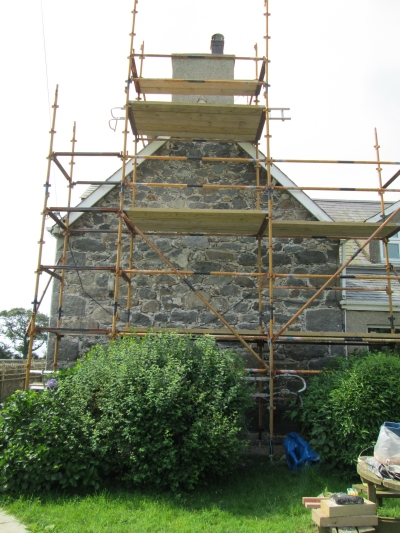
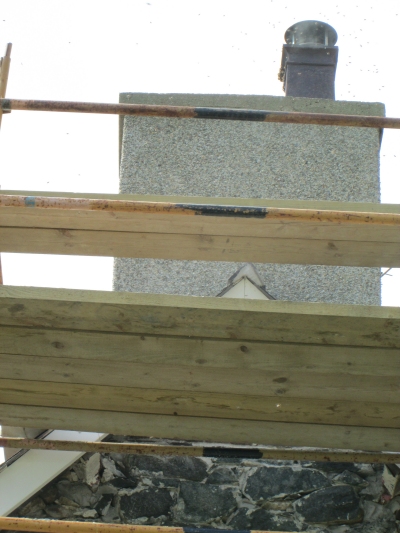
Colony between metal flue and chimney masonry
A swarm entered the chimney on or about 5 June 2016. Removal took place three days later before the nest was well established. The chimney was above a woodburning stove in an inglenook and the bees had entered between the round flange of the cowl at the top of the metal flue liner and a square chimney pot. Fortunately there was scaffolding already in place for rendering the chimney.


An initial attempt to make the swarm abscond by lighting the woodburner was unsuccessful. Only a few bees came out onto the pot. There were already many bees in the room below and numbers there increased after the woodburner was lit. These were taken into a bee vac.
While the woodburner was lit, a hive box was positioned on the pot next to the gap under the cowl flange.
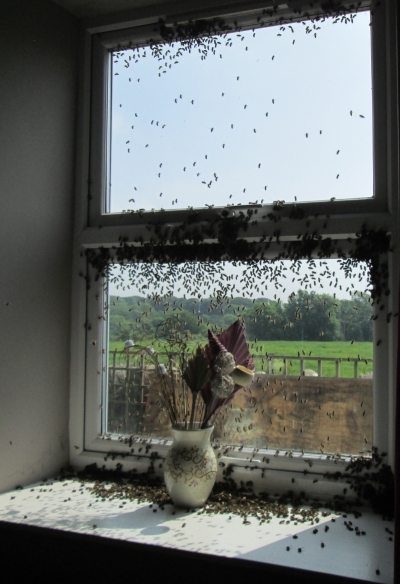
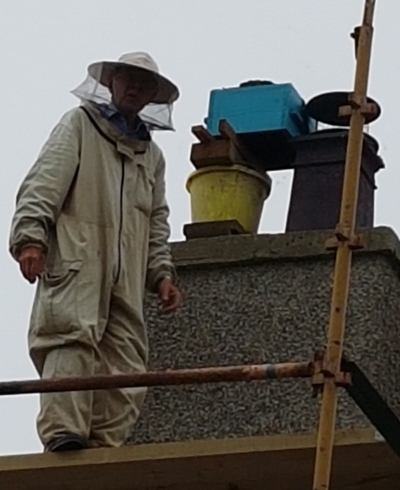
As heat did not work, a smoker was used. It was necessary to remove a panel from the ceiling of the inglenook to allow a smoker to be inserted, and smoke was then puffed up between the flue liner and the masonry. Fortunately there was an updraught despite the narrowness of the gap between the cowl flange and the pot. Smoking drove most of the surviving colony out onto the pot where it was taken into the bee vac.
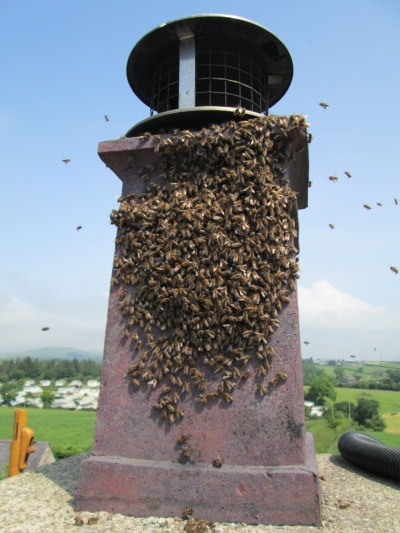
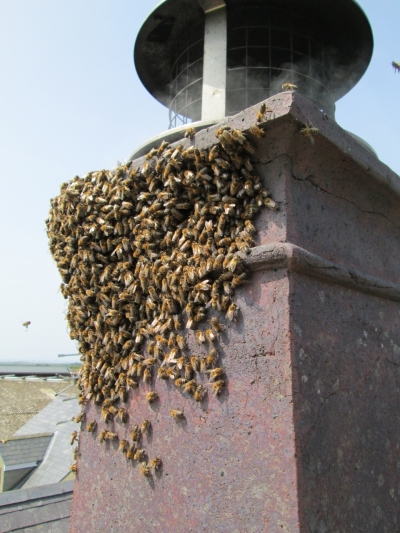
After all the bees on the pot were removed, the vac was switched off and its vents opened. Bees in the air immediately started orientating to it and Nasanov scenting, suggesting that the queen had been taken into the vac.
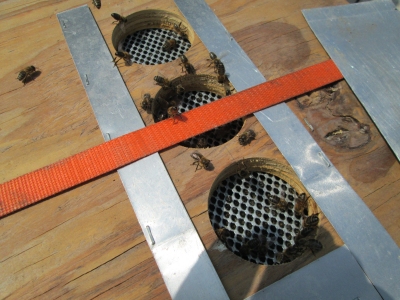
The gap between the cowl flange and the pot was sealed all round with silicone. The bees were run into a hive over three miles away from the removal site.
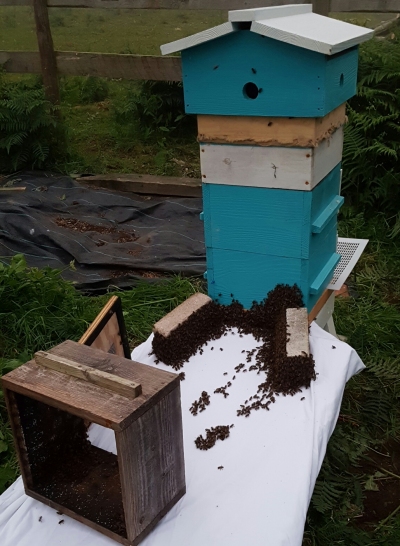
David Heaf's bee removals index